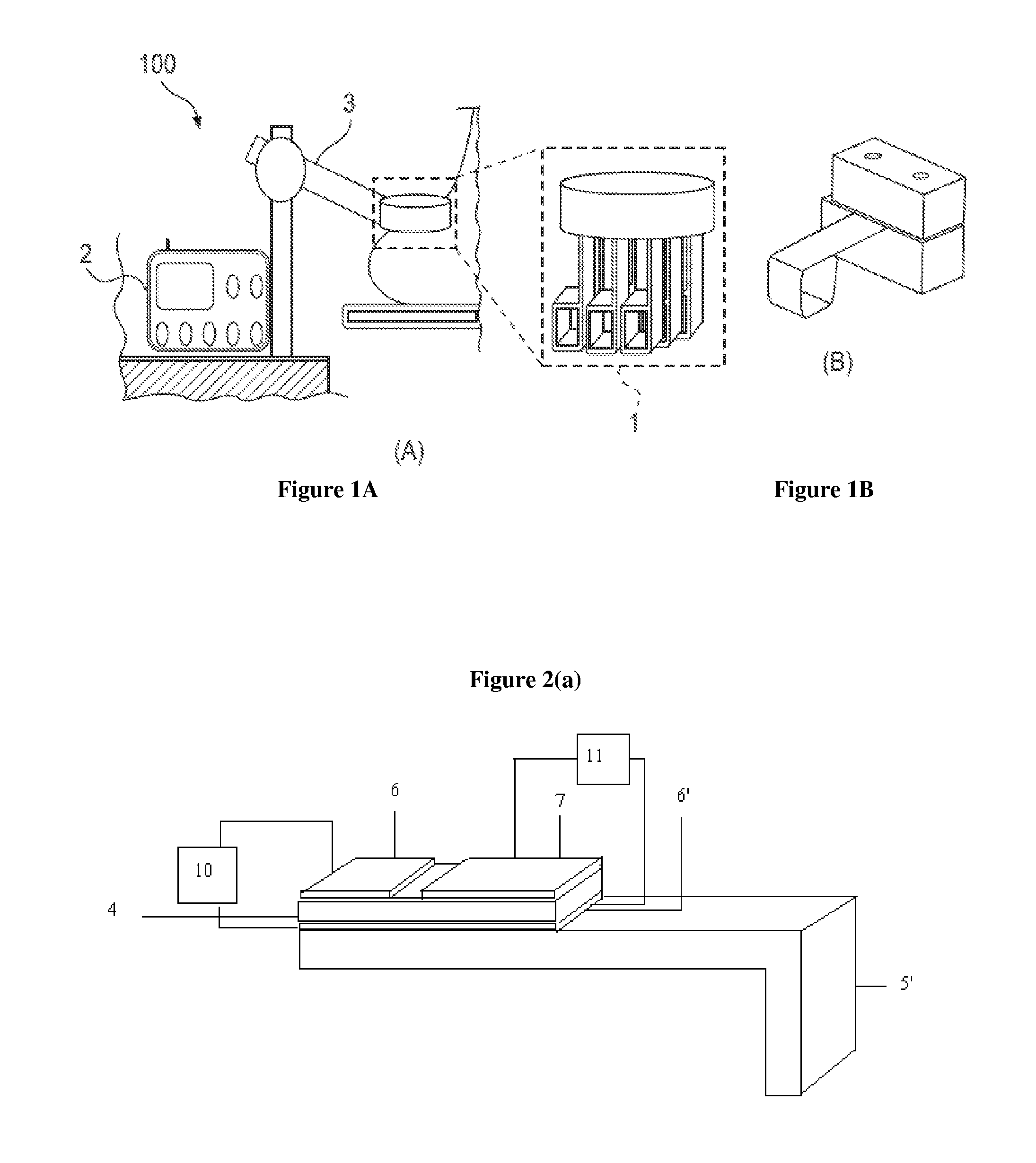System and method for evaluating tissue
a tissue and quantitative evaluation technology, applied in the field of tissue quantitative evaluation system and method, can solve the problems of high false positive rate, high sensitivity, and inability to accurately detect breast cancer in women with dense breast tissue, and achieve low false positive rate, low probability of cancerous tissue being overlooked, and low sensitivity
- Summary
- Abstract
- Description
- Claims
- Application Information
AI Technical Summary
Benefits of technology
Problems solved by technology
Method used
Image
Examples
example 1
[0130]A study was performed to determine the effectiveness of the PEFS of the present invention to accurately evaluate a set of artificial tissues, which mimic the physical properties of various types of tumors. The PEFS was used to determine whether the artificial tumors embedded in the artificial tissue samples have a rough or branchy interfacial surface, a potential indicator of invasive malignant cancer such as malignant breast cancer, by measuring the elastic modulus (E), shear modulus (G) and determining the G / E ratio for the artificial tissues. It was found that either the elastic modulus or the shear modulus may be used to discern the dimensions of the artificial tumor, and that the shear modulus may further be used to characterize the texture of interface of a tumor with the surrounding tissue. Additionally, when the shear modulus was measured using a scan path substantially perpendicular to the direction of corrugation at the interface of the tissue, a G / E ratio of greater...
example 2
[0151]A PEFS was investigated to determine the depth sensitivity of elastic modulus measurements. The PEFS was fabricated from two piezoelectric layers, namely, a top 127 um thick PZT layer (105-H4E-602, Piezo System, Cambridge, Mass.) that functioned to drive a bottom 127 um thick sensing PZT layer bonded to a 50 um thick stainless steel layer (Alfa Aesar, Ward Hill, Mass.). The stainless steel layer formed a square tip at a distal end of the PEFS that was used to perform compression and shear tests.
[0152]To determine the depth sensitivity of the PEFS, artificial tissue samples were prepared by embedding modeling clay model inclusions, having an elastic modulus of about 80 kPa, in a gelatin matrix, which has an elastic modulus of about 4±1 kPa, at various depths ranging from 2 to 17 mm, as shown in FIG. 13(a). The elastic moduli of the model tissues were then measured by indentation compression tests using three PEFS of various widths, namely 8.6 mm, 6.1 mm and 3.6 mm. The resultan...
example 3
[0153]The depth sensitivity of the PEFS of Example 1, defined as the maximum depth for which it is possible to obtain an accurate measurement, was investigated to determine sensor accuracy and reliability. Specifically, the depth sensitivity of the PEFS was investigated for determining the shear modulus and the G / E ratio of a tissue sample. Similar to previous studies which have confirmed that elastic modulus measurements are accurate to a depth sensitivity of about twice the size of the contact area of the PEFS, the depth limit for shear modulus measurements and the G / E ratio was also found to be about twice the size of the contact area.
[0154]The shear modulus of seven S inclusions embedded in artificial tissue samples and seven R inclusions embedded in artificial tissue samples were investigated. Each inclusion was about 22 mm long and 12 mm wide and was made of C92 modeling clay, which has an elastic modulus that closely mimics that of breast tumors. The inclusions were embedded ...
PUM
 Login to View More
Login to View More Abstract
Description
Claims
Application Information
 Login to View More
Login to View More - R&D
- Intellectual Property
- Life Sciences
- Materials
- Tech Scout
- Unparalleled Data Quality
- Higher Quality Content
- 60% Fewer Hallucinations
Browse by: Latest US Patents, China's latest patents, Technical Efficacy Thesaurus, Application Domain, Technology Topic, Popular Technical Reports.
© 2025 PatSnap. All rights reserved.Legal|Privacy policy|Modern Slavery Act Transparency Statement|Sitemap|About US| Contact US: help@patsnap.com



